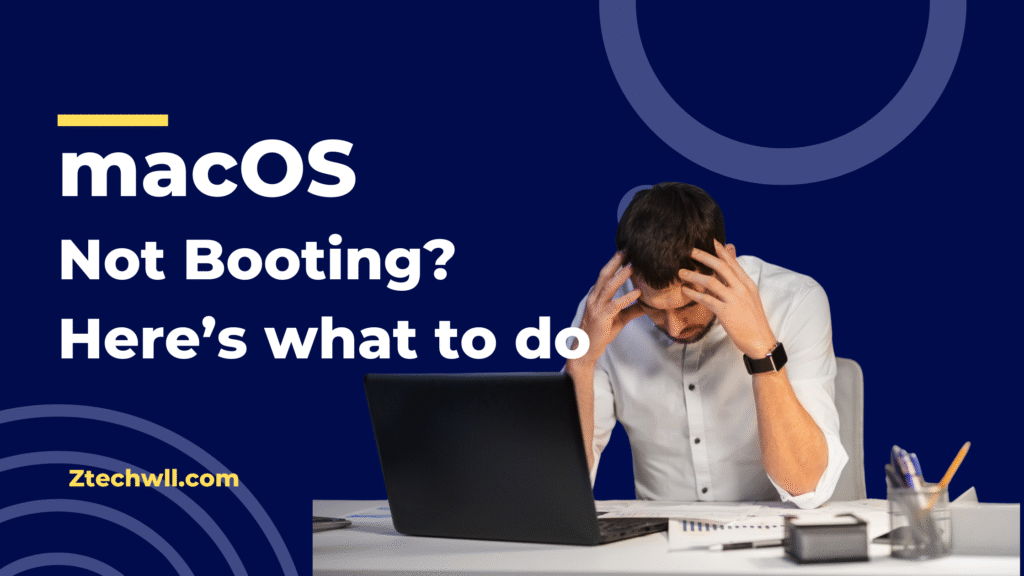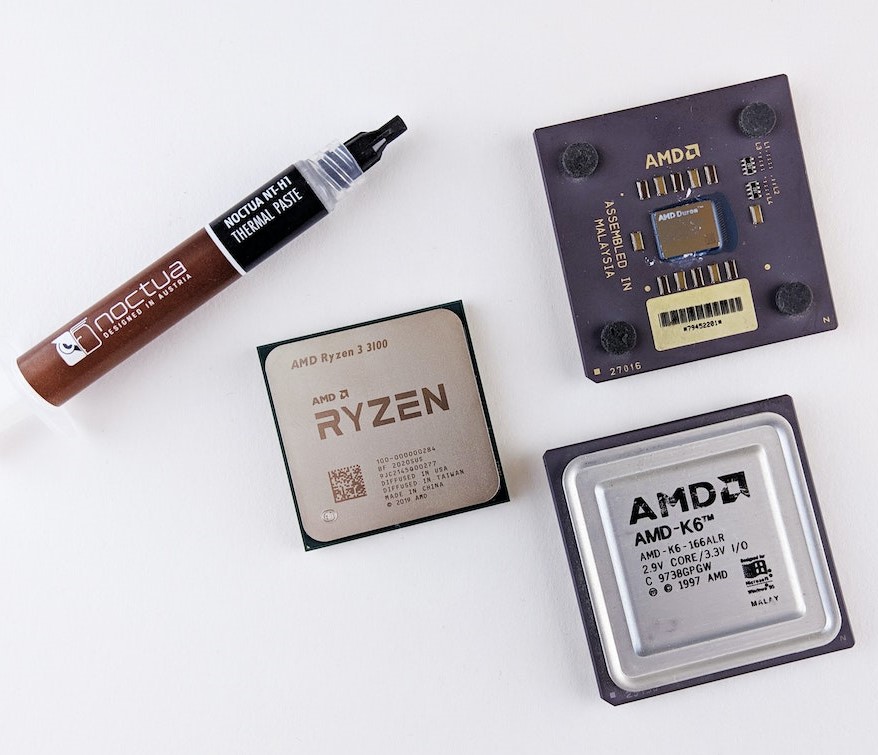macOS Not Booting?
Failing to start or freezing during the initial start-up of your MacBook can be quite worrying and difficult to fix. For issues such as a frozen loading screen, a blank screen or a flashing folder with a question mark, this article will give you solutions. All the fixes are arranged in a simple format to help people who are not as technical.
Signs Something is Wrong When Mac Fails to Boot
The first step is to be sure, you can tell when your MacBook is having problems at bootup. These symptoms might be:
- The MacBook freezes with the Apple logo and a bar showing, but nothing happens.
- No display appears on the screen after turning the TV on.
- The folder displays with an icon of a question mark.
- The system is frequently rebooting or shutting itself down before the proper boot sequence finishes.
- There is a lot of loud fan noise or you notice strange beeping coming from the unit.
Every symptom carries a clue as to what is wrong. You can use the steps described below to discover and address the issues.
Step 1: Before anything, test that the computer’s power supply and basic equipment are in working order.
To avoid software issues, check that nothing is wrong with the physics or hardware of your MacBook.
Checklist:
- Check that the charger is nicely plugged in and the port is free from dirt.
- Use a different charger or try charging in another outlet.
- Force your phone to turn off by holding the power key for 10 seconds and after that, press it again to switch it back on.
- If your MacBook has a removable battery (it is older), take out the battery and reinsert it.
- Check for signs that show the phone has been dropped or exposed to water.
A loss of power may indicate something wrong with the hardware. Such problems should be fixed by reaching out to Apple Support or a specialist technician.
Step 2: Clear your SMC and NVRAM settings (for Intel Macs)
Restarting the System Management Controller (SMC) and Non-Volatile Random-Access Memory (NVRAM) usually helps solve various startup issues in MacBooks based on Intel.
How to Restart the SMC:
If your MacBook’s battery is not removable (most Intel models), the following steps apply.
- To fully shut down the Mac, press the power button.
- Press down the Shift, Control, Option, and Power buttons for around 10 seconds.
- Restart your Mac by placing all of the keys back in the keyslot and then pressing the power button.
How to Clean Up the NVRAM:
- Unplug your Mac and watch for the power light to go off.
- Press the Option, Command, P, and R keys at the same time when you turn on your computer.
- Keep holding the + and – keys for about 20 seconds.
- Leave the keys alone and allow the Mac to finish starting up.
It helps correct problems related to display, audio and how the system starts up.
Step 3: Put the Mac in safe mode to begin.
When in Safe Mode, your Mac only launches the most important components and turns off the rest of the drivers and login programs. It can help discover if third-party applications are leading to the problem.
Instructions for Turning on Safe Mode:
If you use an Intel Mac:
- Restart the computer by selecting the Shut Down button on the screen.
- Hold down the Shift key as soon as you turn it on.
- Set the key down as soon as the computer shows the login window.
When looking at Apple Silicon (M1/M2) Macs:
- Select Shut Down from the Apple menu to end the Mac.
- Depress and keep holding the power button until you see “Loading startup options” on your screen.
- Choose the startup disk you wish to use.
- Press and hold Shift and then select “Continue in Safe Mode.”
When Safe Mode Gets Started:
- Remove any newly installed programs or login credentials from your computer.
- Check the disk health by running Disk Utility (follow the next step to learn how).
If booting in Safe Mode is successful but not in regular mode, the problem is probably related to third-party software, errors with system files or incorrect extensions.
Step 4: On the Recovery screen, use Disk Utility to help you
Problems with your startup files or disk can stop macOS from starting. You can use macOS Recovery to access tools like Disk Utility and fix your startup disk.
How to Access Recovery Mode’s Disk Utility:
If you own an Intel Mac, the actions should be as described above.
- Holding down the power button will cause your Mac to shut off.
- Immediately after pressing the Power button, press and hold Command + R until the Apple logo appears.
If you have an Apple Silicon Mac:
- Once the Mac shuts down, hold down the power button.
- Press and keep holding the power button until the “Options” menu comes up.
- Click the Options button, then press Continue to open macOS Recovery.
Once you enter Recovery Mode:
- Pick Disk Utility from the macOS Utilities window.
- Pick the initial disk (which is generally called “Macintosh HD”).
- Go up to First Aid in the menu and choose Run to delete the files.
Should Disk Utility find errors and fix them, restart the Mac to check if it starts up properly. If the current step is unsuccessful, go on to the next one.
Step 5: If you want to recover your data, do a fresh installation of macOS
Should trouble with your startup keep occurring, you can reinstall macOS and get rid of corrupted files without losing your settings or apps.
Guides to Reinstall macOS:
- Continue to press Command + R when the startup chime sounds to turn on your Mac.
- Use the prompts on the screen to finish installing the app.
Your files are kept safe during macOS reinstallation, still, backing them up is always suggested.
Step 6: Restore Your Mac Using a Time Machine Backup (If You Have One)
Should everything still not work as it should, you can go back to a previous time and status with Time Machine.
To Get Access to your Data from a Time Machine Backup:
- Start the Mac with macOS Recovery.
- Choose the option Restore from Time Machine Backup.
- Pick the backup file you want to recover.
- Proceed through the steps given to finish the process.
You should try this if the original system files are broken and cannot be repaired or re-installed.
Step 7: You should check for any hardware issues and call Apple Support
When none of the previous approaches fix the problem, it may be because of hardware failure. Frequent hardware-related problems are:
- Having an issue with SSD or hard drive
- A broken logic board
- Problems with the random access memory (RAM)
- When a graphics card breaks down
Therefore, you need to:
- Call or visit the nearest Apple Store or Apple authorized service provider to arrange an appointment.
- To find out if there is a hardware problem, press and hold down D as the computer is starting up (only for Intel Macs).
Apple technicians are able to run complete checks and fix issues when needed.
Ensuring no new startup issues happen
Do these things to prevent starting problems with macOS down the road:
- Install any patches and security updates released for macOS.
- Avoid getting software from places you don’t trust.
- Check your disk every so often with Disk Utility.
- Having a Time Machine backup makes it faster to rescue your data.
- You can watch system performance by using Activity Monitor.
Final Thoughts
Fixing problems on a MacBook generally means following a sensible and methodical troubleshooting plan. If problems are caused by messed-up system files, corrupted disks, or software issues, solutions like Safe Mode, Disk Utility, and installing a new macOS are helpful. You can always get professional help for significant hardware troubles from Apple or licensed technicians.
This document guides users through the complete process of fixing problems when macOS fails to start, helping people to do it safely and effectively.




